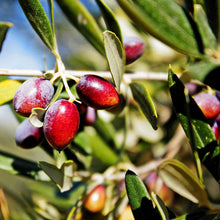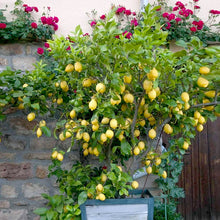Why Grow Fruit Trees?
Growing your own fruit is rewarding, exciting, and practical. You will save money and enjoy fresh and healthy snacks. You don’t have to pay ridiculous prices for organic fruit if you grow your own! No more worries of GMOS, pesticides, or breaking the bank to avoid them! Get the kids (or grandkids) in on it! Growing Fruit Trees is an ideal learning opportunity for your children. Create memories and start traditions that will carry on for generations. Get your family outside for harvesting and inside the kitchen for baking, cooking, and canning. Whether you are baking apple pies, making your own strawberry preserves or blueberry jelly, drying goji berries, or simply eating your homegrown figs fresh off the tree, growing Fruit Trees and berries is a fun and healthy way to bring family together. You can even grow indoor fruit trees with low or no chill hour fruit trees, like fig and citrus.
When to Prune Fruit Trees
Most fruit bearing trees should be pruned in late winter or early spring. Pruning at this time causes minimal stress to your tree and it encourages vigorous spring growth right where you want it to go. Minor fruit tree pruning to remove dead or damaged branches can be done at anytime and preferably as soon as you notice them.
How to Prune Fruit Trees
Open center or vase training is commonly used in Almond, Apricot, Cherry, Fig, Nectarine, Olive, Peach, Persimmon, Plum, and Pomegranate trees. Select 4 or 5 scaffolding branches to create a vase shape. Central leader pruning is commonly used for Apple, Pear, Persimmon, Cherry, and Pecan. These trees have a slightly pyramidal shape with the central leader always being the tallest branch. The leader should be headed back to a strong bud yearly to keep it strong and vigorous. For both types of fruit tree training, small, weak branches, suckers, and crossed or crowded branches should be removed. Pruning isn’t necessary for trees to produce fruit, but it can help your tree produce better quality fruit and keep fruit in easy range for picking.
When to Fertilize Fruit Trees
Fruit Trees should be fertilized about the same time that you prune them. Late winter is optimal for warmer climates that have an early spring. Early spring is best for everyone else. Feeding your tree at this time gives it a boost right when it is about to expend a lot of energy emerging from dormancy and putting on new growth. Use a balanced slow release fertilizer. If your soil is nutrient weak a second round of fertilizer can be applied in late summer or early fall.
When to Plant a Fruit Tree
The best time to plant a fruit tree depends on your climate. Late winter or early spring as soon as the ground thaws is a great time to plant for just about any climate. Planting Fruit Trees in spring or summer gives them plenty of time to establish before harsh winter temperatures in cold climates. Fall is a great time to plant for warm and mild regions. Warm climates where the ground doesn’t freeze in winter can plant at this time as well. Just take into account the type of fruit tree. If you are talking about subtropical or tropical fruit trees like citrus or banana avoid planting during cold temperatures.
How to Plant Fruit Trees
Water your potted tree thoroughly before planting. Next, dig a hole about twice as wide and almost as deep as the root ball. Place your fruit tree evenly in the hole. The top of the root ball should be slightly higher than the existing soil line. Backfill with the existing soil. Water deeply until the water begins to pool. Apply 1 to 2 inches of mulch in a mound to reduce watering needs, retain soil moisture, and reduce weeds. Water deeply daily for the first week, 3 times per week for the next couple weeks, and 1 to 2 times per week for the next 2 months or so until your fruit tree is established.
Where to Buy Fruit Trees
For the best selection and quality, buy Fruit Trees online at PlantingTree. We ship them directly to your doorstep from our North Carolina plant nursery. PlantingTree is a family owned online garden center that offers healthy, high quality plants and trees for sale online. Scroll up to view our available inventory of Fruit Trees for sale.
For more options, Browse our Tropical Fruit Trees and Dwarf Fruit Trees for sale.













